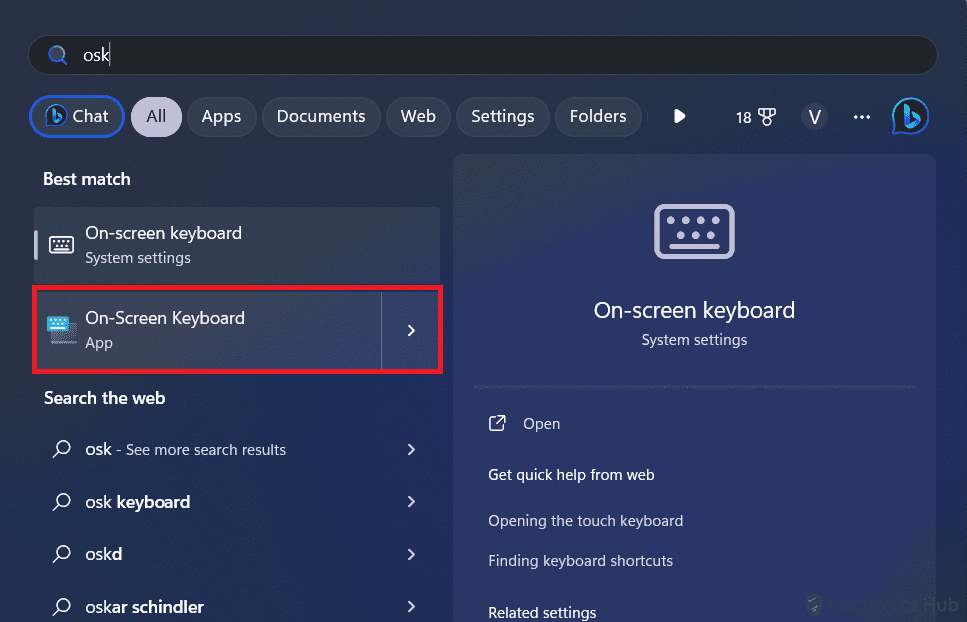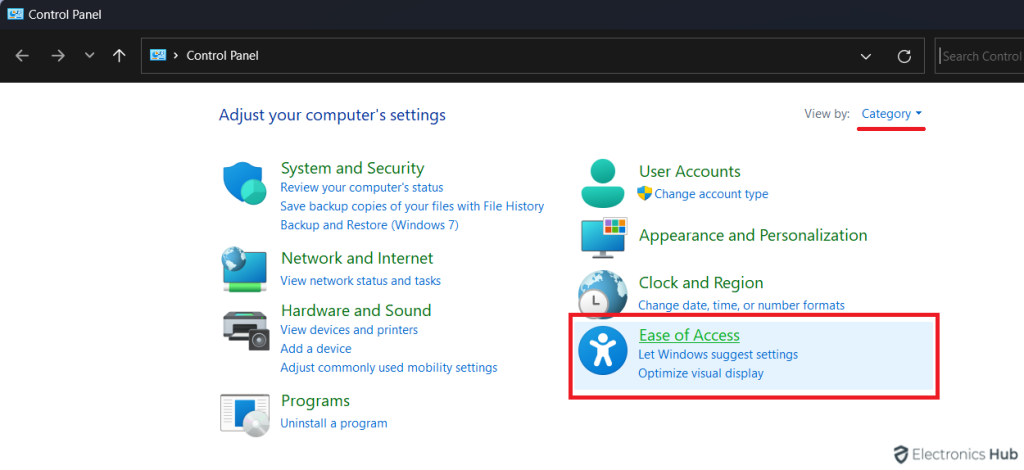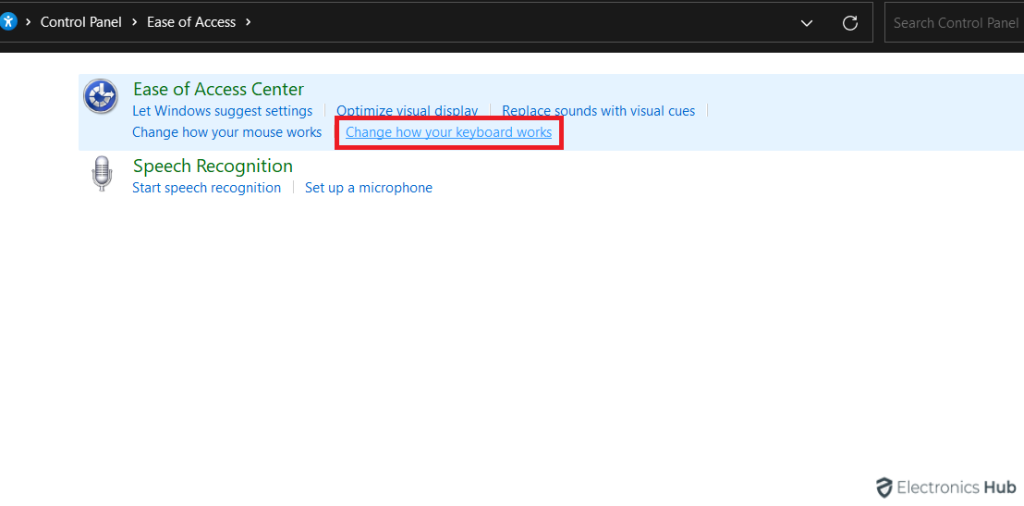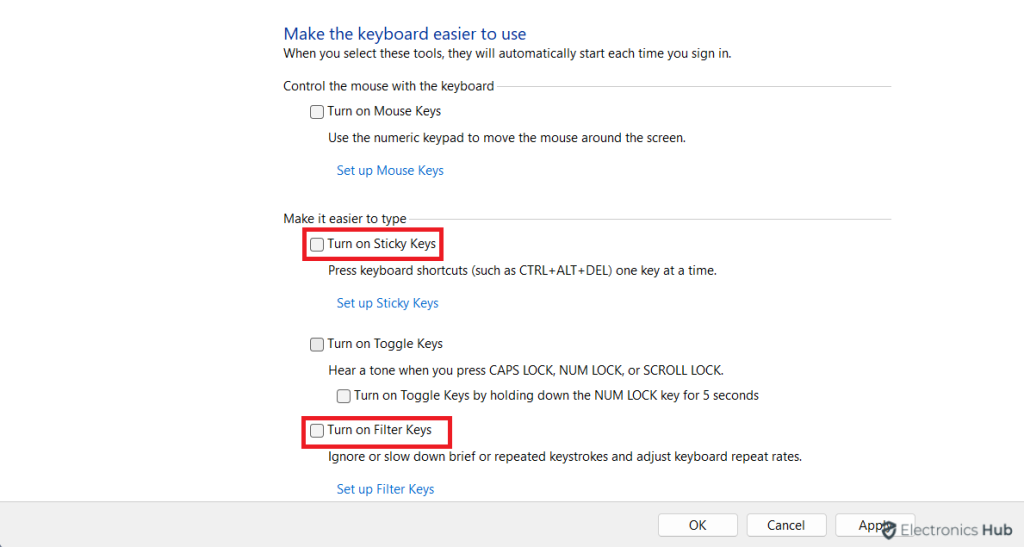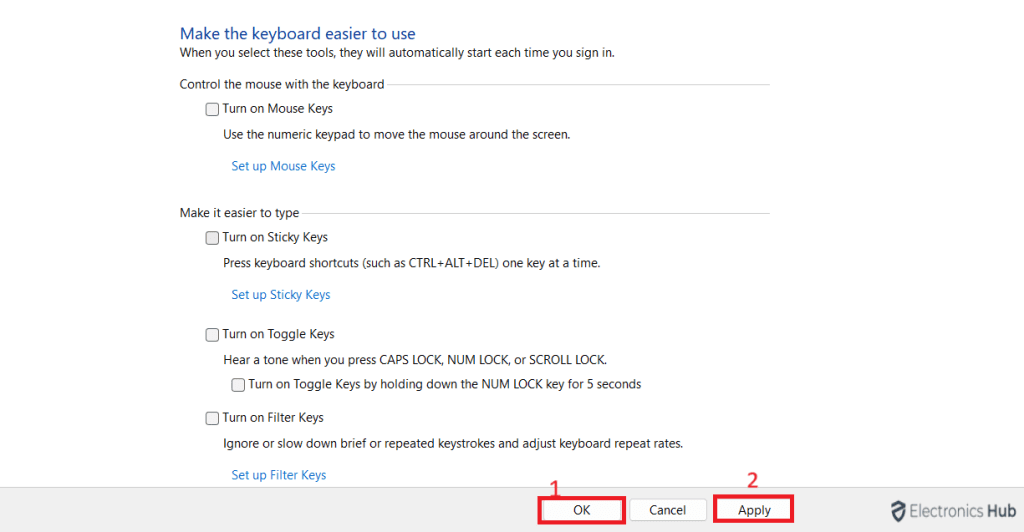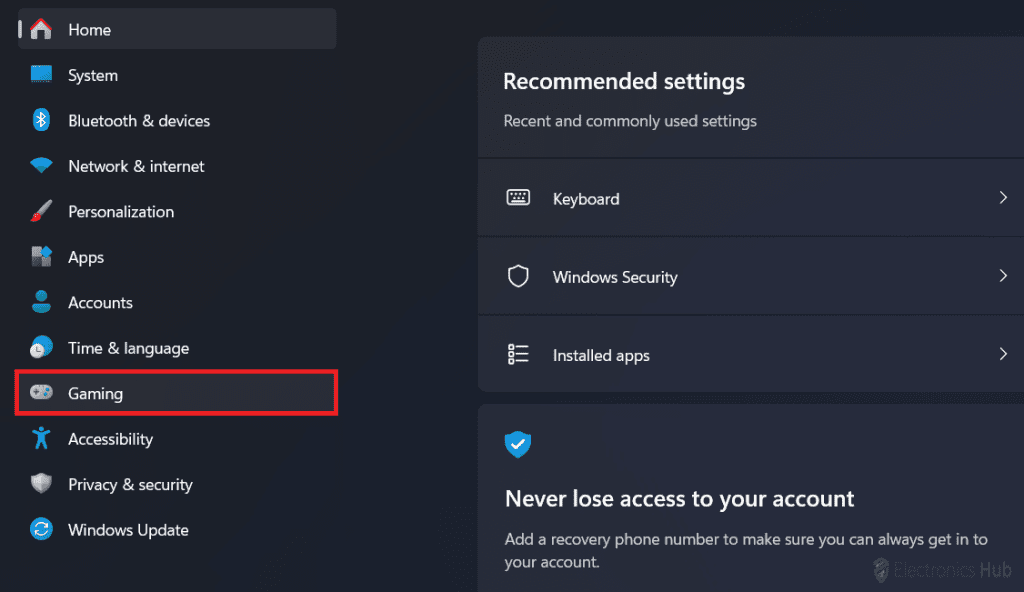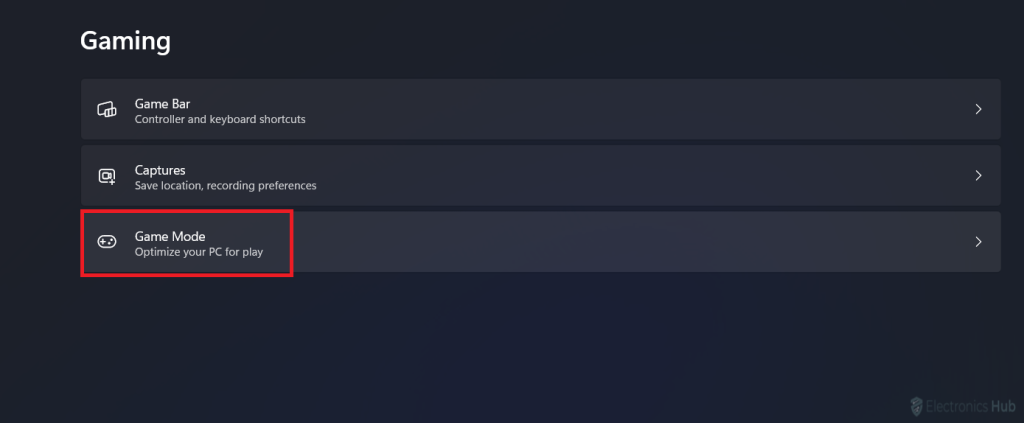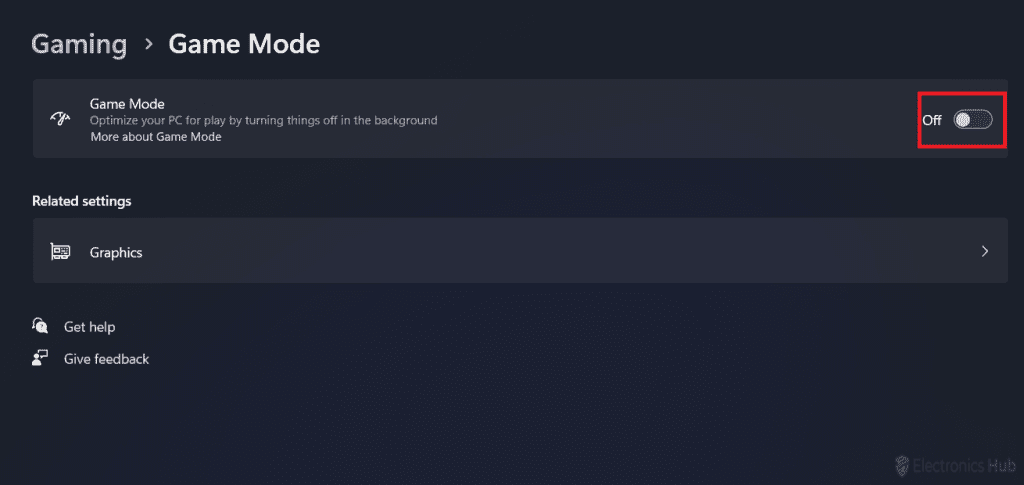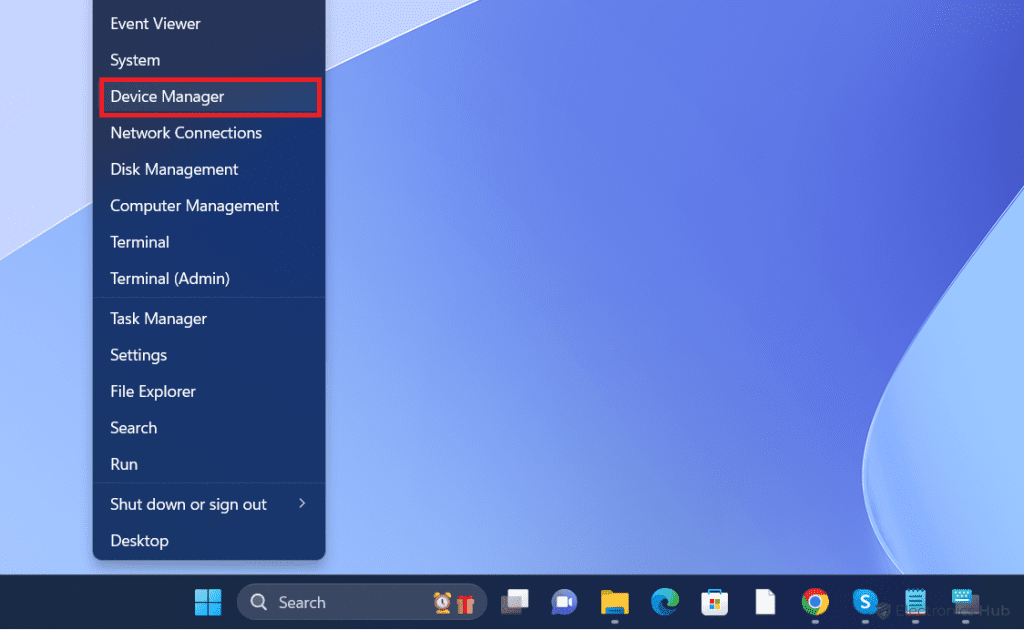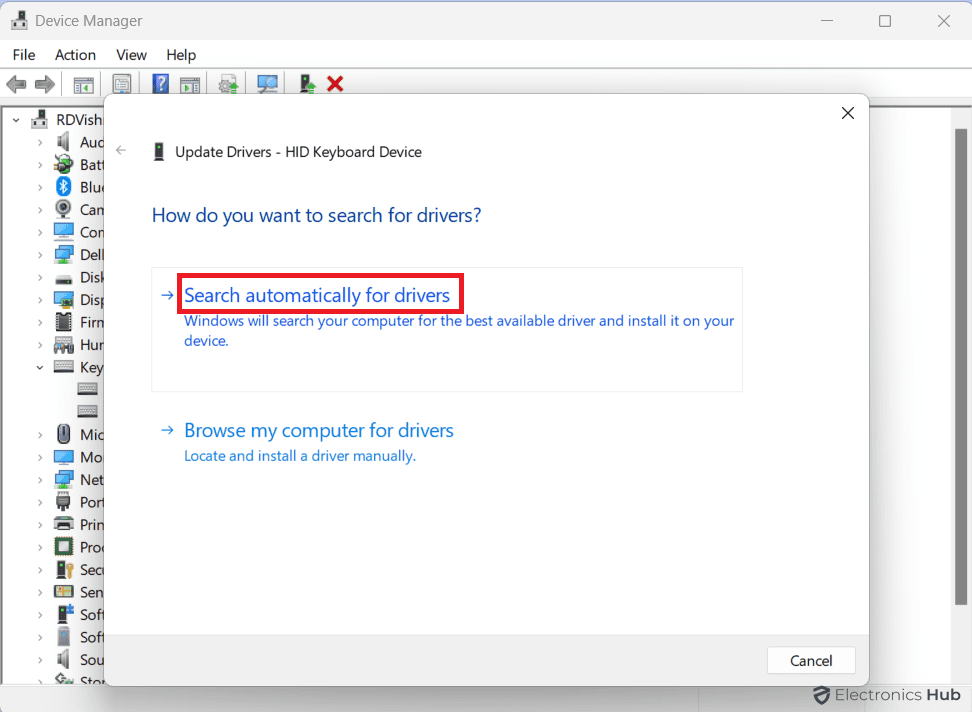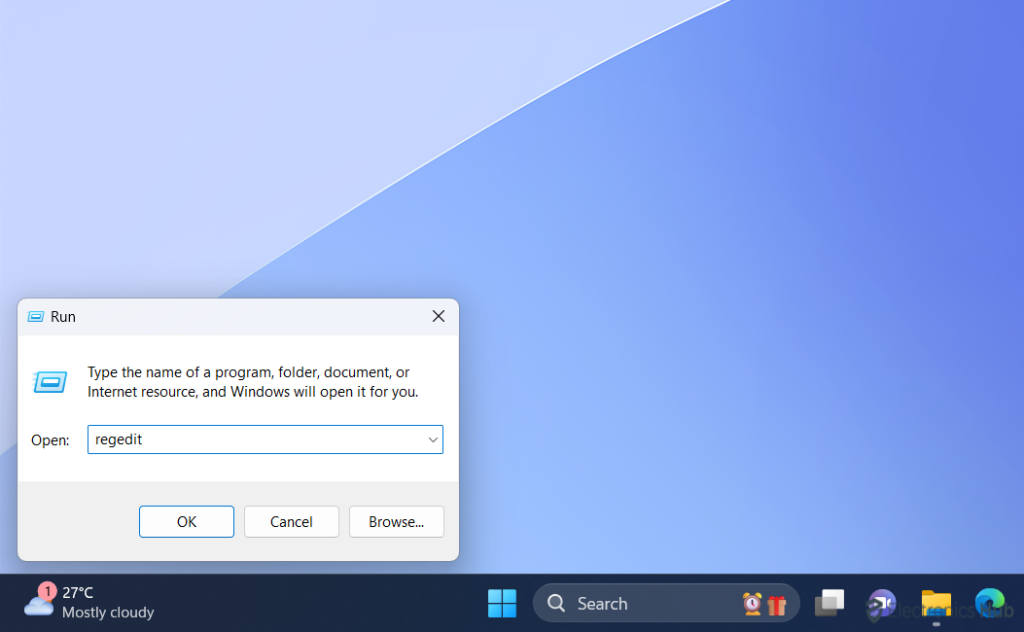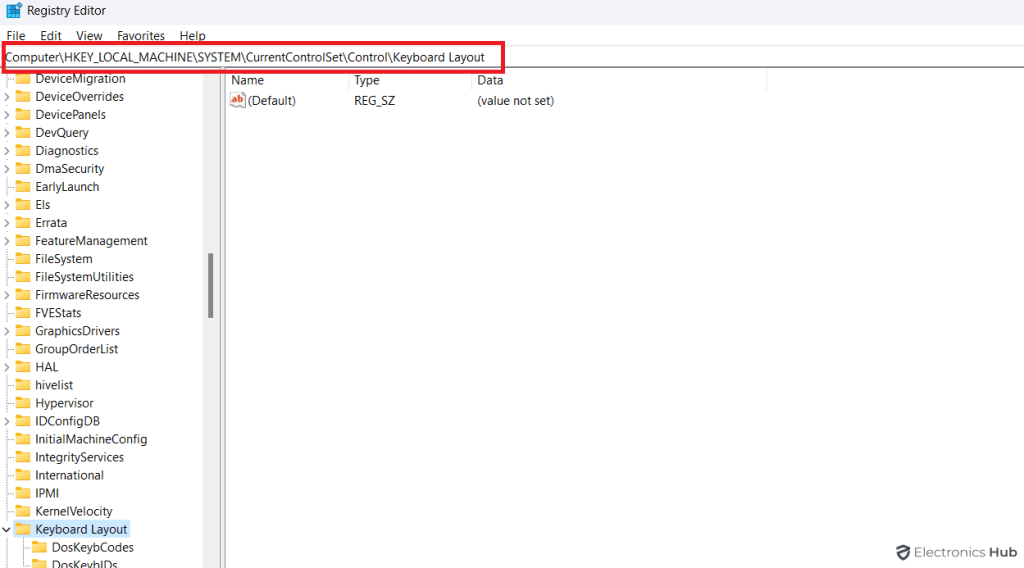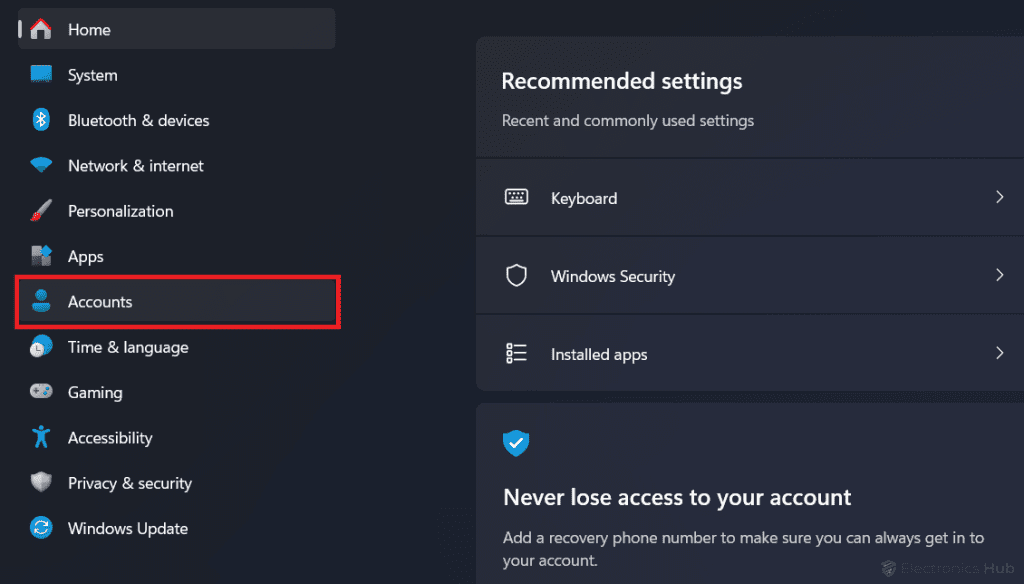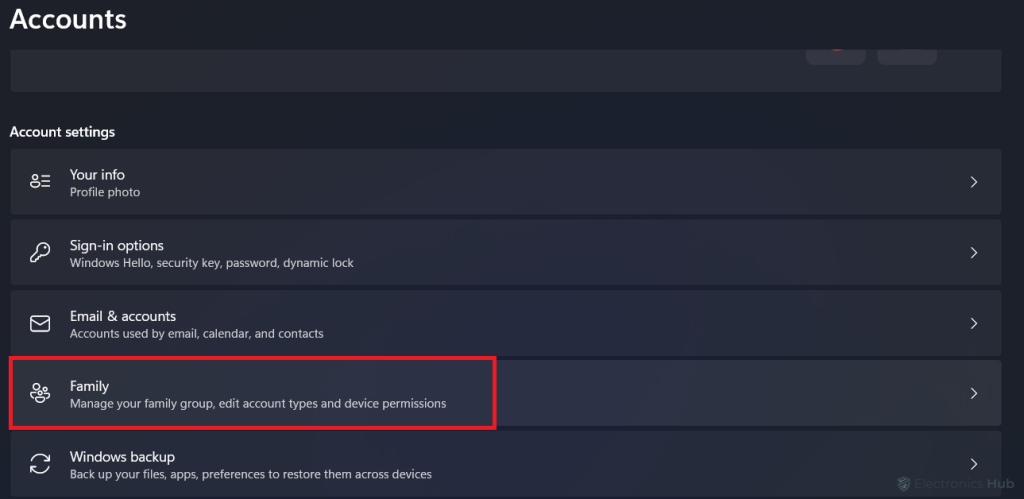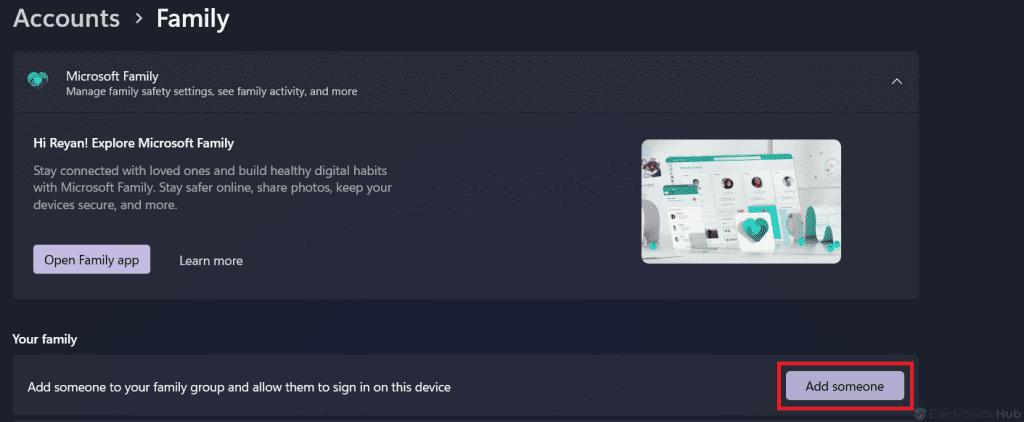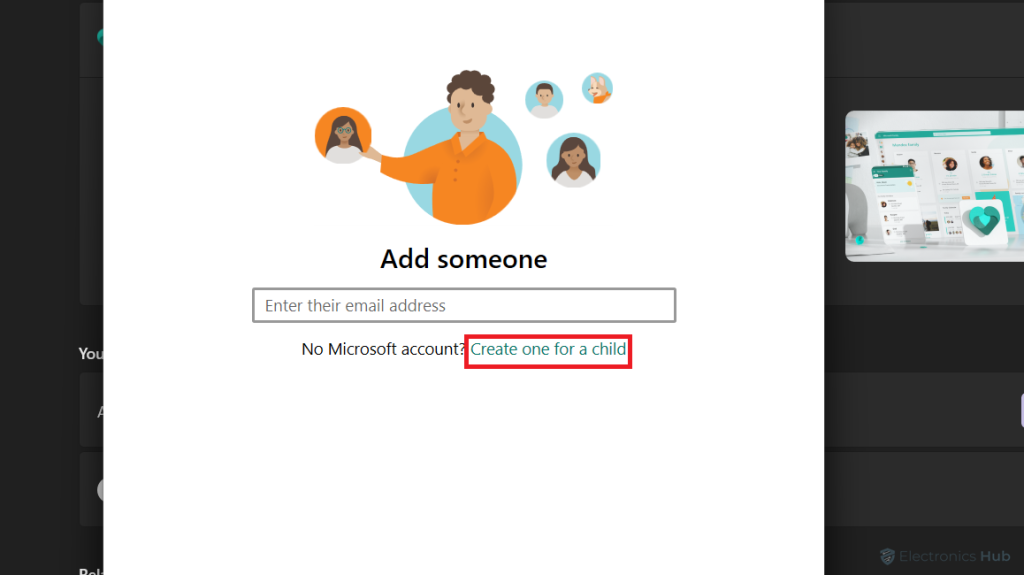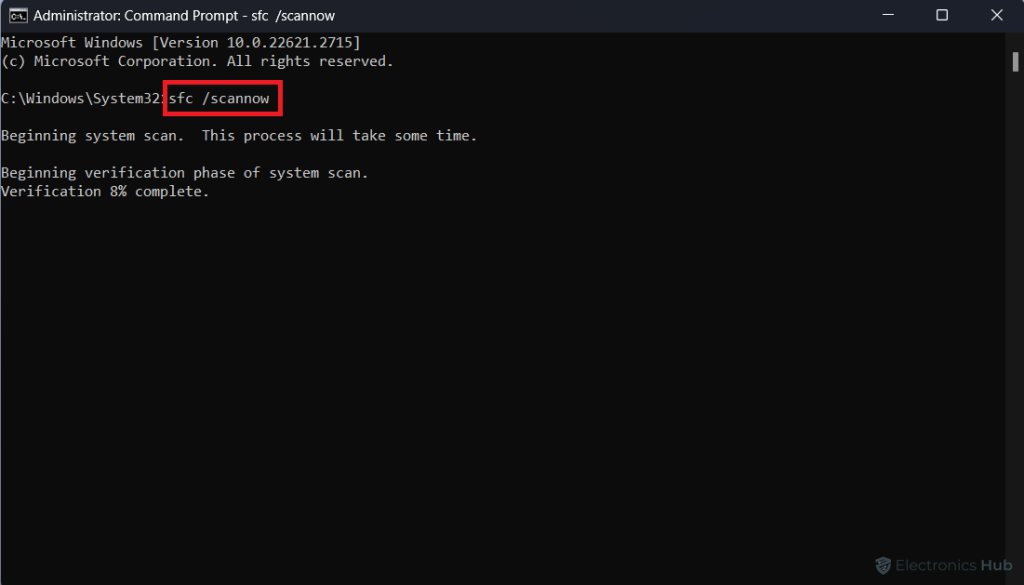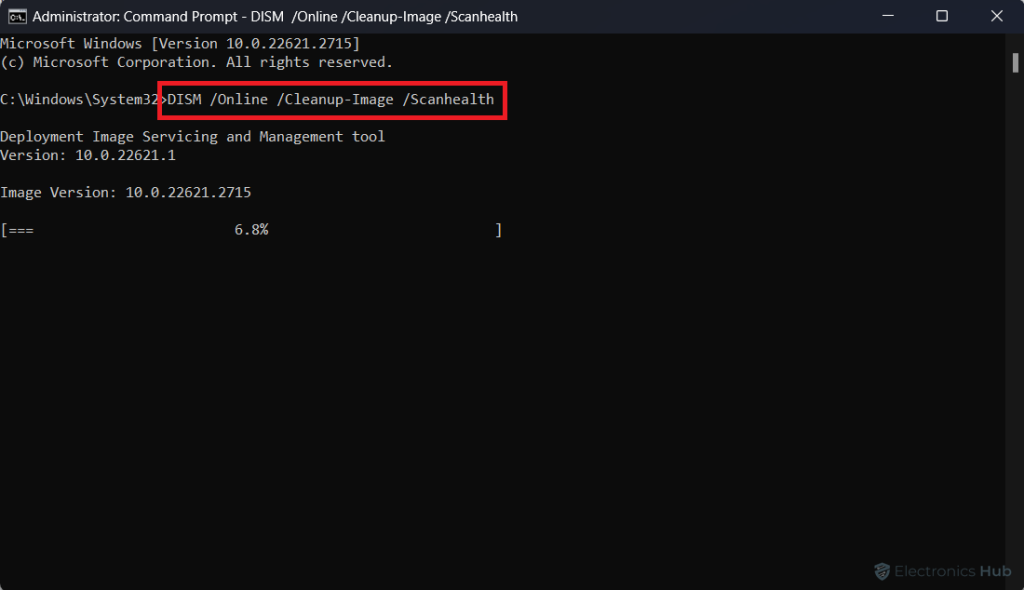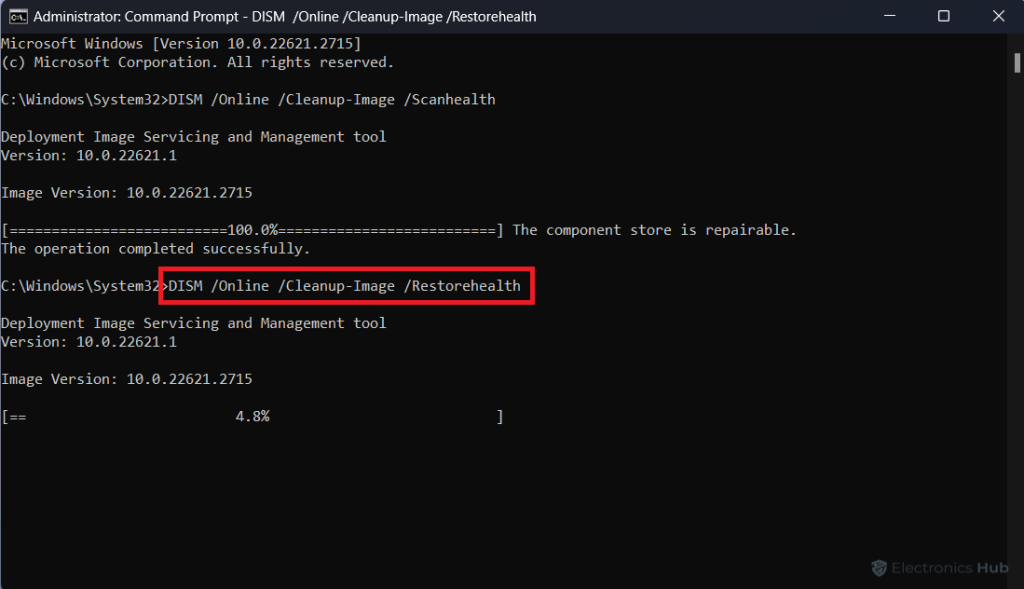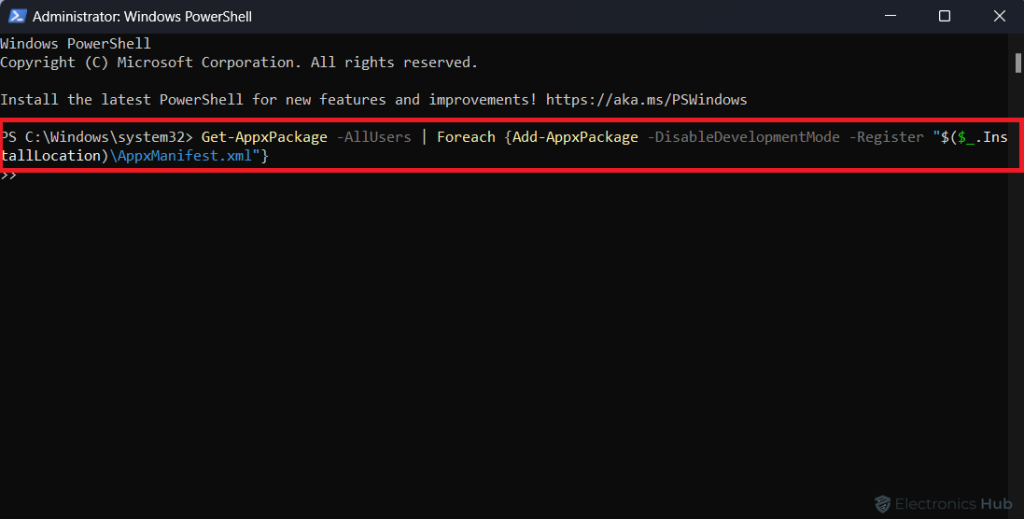The Windows key on your keyboard is like a magic button. It helps you open the Start Menu, Task View, and lots of shortcuts with just one tap, making your computer experience seamless and efficient.
But what happens when this key, so crucial to your digital life, suddenly goes silent? Panic sets in as you fumble through menus and endless mouse clicks, longing for the ease and control once provided by that simple key.
Fear not, for this troubleshooting guide will equip you with the knowledge and tools to restore your Windows key to its former glory. With step-by-step instructions and practical solutions, you’ll be empowered to banish the frustration and reclaim your digital freedom.
Join the quest to bring back your Windows key and enjoy easy navigation through your digital world once again.
- Reasons for Your Windows Key Not Working
- How to Fix Windows Key Not Working Issue?
- 1. Hardware Issue
- 2. Turning On On-Screen Keyboard.
- 3. Turning off Windows Lock key on Your Keyboard
- 4. Turning off Filter Keys and Sticky Keys
- 5. Charge or Replace Your Bluetooth Keyboard Batteries
- 6. Turning off Game Mode
- 7. Update your Keyboard Driver
- 8. Modify Your Registry
- 9. Create a New User Account
- 10. Run SFC Scan
- 11. Use DISM Command Prompt
- 12. Use Powershell Command
- 13. Scan for Malware
- 14. Replace Your Keyboard
- Windows Key Not Working – FAQs
- Conclusion
Reasons for Your Windows Key Not Working
- Hardware Issue: Physical damage to the keyboard, such as spills or excessive wear, can lead to malfunctioning keys, including the Windows key.
- Disabled Windows Key: Some keyboards, particularly gaming keyboards, have a feature that allows you to disable the Windows key to prevent accidental activation during gaming sessions.
- Filter Keys and Sticky Keys Might be Enabled: These accessibility features are designed to aid users with repetitive keystrokes. However, they can sometimes interfere with the normal functioning of the Windows key.
- Corrupted Keyboard Driver: Outdated or corrupted keyboard drivers can cause various issues, including a non-responsive Windows key.
- Enabled Game Mode: Windows Game Mode, designed to optimize performance during gaming, can sometimes disable the Windows key to prevent interruptions.
How to Fix Windows Key Not Working Issue?
A non-functional Windows key can be a source of frustration and hinder your productivity. Fortunately, a range of troubleshooting methods can help you identify the root cause and restore functionality to this essential key. This guide will provide step-by-step instructions for each method, empowering you to regain control over your digital experience.
1. Hardware Issue
Before delving into software-related solutions, it’s crucial to rule out hardware issues as the culprit for your non-functional Windows key. Here’s how to identify and address hardware-related problems:
- Test the Windows Key on Another Device: Connect your keyboard to a different computer or laptop and check if the Windows key works properly. If it functions perfectly on another device, the issue likely lies with your primary computer’s configuration or software.
- Inspect the Keyboard for Physical Damage: Examine your keyboard for signs of physical damage, such as cracks, spills, or excessive wear. If you notice any damage, the keyboard may need to be replaced.
- Clean the Keyboard: Sometimes, dust, debris, or spills can accumulate under the Windows key, interfering with its operation. Try cleaning the keyboard thoroughly using compressed air or a soft cloth dampened with rubbing alcohol.
- Try a Different Keyboard: If available, connect a different keyboard to your computer and check if the Windows key works. If the issue persists, the problem likely lies with your computer’s hardware or software settings.
If you’ve ruled out hardware issues, proceed to the following troubleshooting methods to address software-related causes.
2. Turning On On-Screen Keyboard.
If your physical keyboard’s Windows key is malfunctioning, you can utilize the on-screen keyboard as a temporary workaround. The on-screen keyboard is a virtual keyboard that appears on your screen, allowing you to enter text and navigate your computer using your mouse or other input devices. Here’s how to activate the on-screen keyboard:
- Click on the Start button or press the Windows key on your keyboard.
- Type “osk” or “on screen keyboard” into the search bar and press Enter.
Remember, the on-screen keyboard is a temporary solution, and it’s recommended to resolve the issue with your physical keyboard to restore full functionality.
3. Turning off Windows Lock key on Your Keyboard
Some keyboards, particularly gaming keyboards, have a feature that allows you to disable the Windows key to prevent accidental activation during gaming sessions. Look for a key with a lock symbol or the words “Windows Lock” on your keyboard. Press this key to toggle the lock on or off. If you don’t have Windows Lock Key on your Keyboard ignore this method.
4. Turning off Filter Keys and Sticky Keys
Filter Keys and Sticky Keys are accessibility features designed to make it easier for users with repetitive keystrokes or difficulty holding down keys to type. However, they can sometimes interfere with the normal functioning of the Windows key, particularly Sticky Keys. To disable both Filter Keys and Sticky Keys, follow these steps:
- Click on the Search bar in the taskbar then type “Control Panel” and press enter.
- Ensure that your view mode in the Control Panel is set to “Category.”
- Locate the “Ease of Access” heading and click on it. This will expand the Ease of Access section, revealing various accessibility-related settings.
- Within the Ease of Access section, click on the “Change how your keyboard works” link. This will open the Keyboard Properties window, which allows you to configure keyboard settings.
- To Disable Filter keys, Look for the “Filter Keys” section which is located under the “Make it easier to type group.”
- Ensure that the checkbox next to “Turn on Filter Keys” is empty. If there is a checkmark, click on it to remove it.
- To Disable Sticky keys, Look for the “Sticky Keys” section which is located under the “Make it easier to type group.”
- Ensure that the checkbox next to “Turn on Sticky Keys” is empty. If there is a checkmark, click on it to remove it.
- Click on Ok then Apply to save the Changes.
After completing these steps, try using the Windows key to confirm that it is functioning properly.
5. Charge or Replace Your Bluetooth Keyboard Batteries
If you are using a Bluetooth keyboard, a common cause of a non-functional Windows key is low battery power. Follow these steps to address battery-related issues:
- Check Battery Levels: Consult the user manual or manufacturer’s website for your specific Bluetooth keyboard model to determine how to check battery levels. Some keyboards may have indicators or notifications to indicate low battery power.
- Charge Bluetooth Keyboard Batteries: If your Bluetooth keyboard has rechargeable batteries, connect it to the charging cable provided with the keyboard or a compatible charger. Refer to the user manual for specific charging instructions and charging times.
- Replace Bluetooth Keyboard Batteries: If your Bluetooth keyboard uses non-rechargeable batteries, replace the batteries with new ones. Ensure you use the correct battery type and size as specified in the user manual.
Once the keyboard is fully charged or new batteries are installed, try using the Windows key to confirm that it is functioning properly.
If charging or replacing the batteries doesn’t resolve the issue, proceed to the following troubleshooting methods.
6. Turning off Game Mode
Windows Game Mode is a feature designed to optimize performance during gaming sessions by prioritizing gaming-related processes and resources. However, it can sometimes disable the Windows key to prevent interruptions during gameplay. To disable Game Mode, follow these steps:
- Click on the Start button and select “Settings.” to open Settings app.
- Inside the Settings window, navigate to the “Gaming” option. Which is located at the left-hand side menu.
- Once you’ve entered the Gaming settings, look for the “Game Mode” option. This option is typically located at the top of the settings page.
- To disable Game Mode, simply toggle the switch located next to the “Game Mode” option to the “Off” position.
- After disabling Game Mode, close the Settings window and try using the Windows key to confirm that it is functioning properly. If the Windows key is still not working, proceed to the next troubleshooting method.
7. Update your Keyboard Driver
Outdated or corrupted keyboard drivers can often cause issues with keyboard functionality, including a non-functional Windows key. Updating your keyboard driver can resolve these issues and restore proper operation. To update your keyboard driver, follow these steps:
- Right click on the Start button and search for “Device Manager” from the menu.
- Select “Device Manager” from the menu to open the Device Manager application.
- In the Device Manager window, expand the “Keyboards” category.
- Identify the keyboard driver corresponding to your connected keyboard. It may be listed under the generic name “Standard PS/2 Keyboard” or the name of your specific keyboard manufacturer and model.
- Right-click on the identified keyboard driver and select “Update driver.”
- Choose the option to “Search automatically for updated driver software.“
- Windows will attempt to find and install the latest driver for your keyboard.
Once the driver update is complete, restart your computer to ensure the changes take effect.
After updating your keyboard driver, try using the Windows key to confirm that it is functioning properly.
8. Modify Your Registry
The Windows Registry is a database that stores configuration settings for your operating system. In some cases, a corrupted or incorrect registry entry can cause the Windows key to malfunction. To modify the registry and potentially resolve the issue, follow these steps:
Before making any changes to the registry, it’s crucial to create a backup to prevent potential system instability.
- Right click on the Start button and search for the “Run” option from the menu.
- Select “Run” from the menu to open the Run dialogue box.
- Type “Regedit” into the Run dialog box and press Enter or click OK. This will launch the Registry Editor.
- In the Registry Editor window, copy and paste the following key directly into the Registry Editor’s address bar for faster navigation: HKEY_LOCAL_MACHINE\SYSTEM\CurrentControlSet\Control\Keyboard Layout
- Right-click on the “Scancode Map” registry key and select “Delete” from the context menu.
- If the “Scancode Map” key is not present, it’s likely not applicable for your device. In this case, proceed to the next troubleshooting method.
- Close the Registry Editor and restart your computer. This allows the changes made to the registry to take effect.
- Upon restarting, try using the Windows key to confirm that it is functioning properly.
9. Create a New User Account
If the issue with the Windows key persists after trying the previous troubleshooting methods, creating a new user account can help determine if the problem is specific to your current user profile or a system-wide issue. Follow these steps to create a new user account:
- Click on the Start button and select “Settings.” to open Settings app.
- Inside the Settings window, navigate to the “Accounts” option. Which is located at the left-hand side menu.
- Under the Account settings section, find and click on the family option.
- Click on the Add Someone button next to Add someone to your family group and allow them to sign in on this device.
- Select create one for a child and follow on-screen instructions to create a new user account.
- Once an account is created, Log out of your current user account and click on the newly created user account to sign in.
Once you’re logged into the new user account, try using the Windows key to confirm that it is functioning properly.
10. Run SFC Scan
The System File Checker (SFC) tool is a built-in Windows utility that scans for and repairs corrupted system files. If the Windows key issue is caused by corrupted system files, running SFC Scan can potentially resolve the problem. Follow these steps to run SFC Scan:
- Click on the Search bar in the taskbar then type “Command Prompt“.
- Right Click on it and select Run as administrator.
- In the Command Prompt window, type the following command and press Enter: sfc /scannow
- The SFC Scan will start and may take some time to complete. Please be patient and do not close the Command Prompt window until the scan is finished.
- Once the scan is complete, the Command Prompt will display the results. Look for messages indicating that corrupted files were found and repaired.
- After the SFC Scan has finished, restart your computer to allow the changes to take effect.
11. Use DISM Command Prompt
The Deployment Image Servicing and Management (DISM) tool is a more advanced troubleshooting utility that can repair corrupted system images, including the Windows system image. If the SFC Scan failed to resolve the Windows key issue, running DISM can potentially fix the problem. Follow these steps to run DISM:
- Click on the Search bar in the taskbar then type “Command Prompt“.
- Right Click on it and select Run as administrator.
- In the Command Prompt window, type the following command and press Enter: DISM /Online /Cleanup-Image /Scanhealth
- The DISM scan will start and may take some time to complete. Please be patient and do not close the Command Prompt window until the scan is finished.
- After the scan is complete, type the following command and press Enter: DISM /Online /Cleanup-Image /Restorehealth
- The DISM repair process will start and may take some time to complete. Please be patient and do not close the Command Prompt window until the repair is finished.
- Once the repair process is complete, the Command Prompt will display the results. Look for messages indicating that the system image was repaired successfully. After the DISM repair tool has finished, restart your computer to allow the changes to take effect.
- Upon restarting, try using the Windows key to confirm that it is functioning properly.
12. Use Powershell Command
PowerShell is a powerful tool for managing Windows systems, including resolving issues with system components like the Windows key. If the Windows key issue persists after trying other troubleshooting methods, using a PowerShell command can help restore its functionality. Follow these steps to use the PowerShell command:
- Click the Start button and type “PowerShell” in the search bar. Right-click on the “WIndows PowerShell” application and select “Run as administrator” from the context menu.
- When prompted by the User Account Control (UAC) dialog box, click on the “Yes” button to allow PowerShell to run with administrative privileges.
- In the PowerShell window, type the following command and press Enter: Get-AppxPackage -AllUsers | Foreach {Add-AppxPackage -DisableDevelopmentMode -Register “$($_.InstallLocation)\AppxManifest.xml”}
- This command will scan for all installed applications and re-register them, potentially fixing any corrupted or missing registration entries related to the Windows key.
- After the PowerShell command has finished executing, restart your computer to allow the changes to take effect. Upon restarting, try using the Windows key to confirm that it is functioning properly.
13. Scan for Malware
Malware, including viruses and spyware, can sometimes interfere with system functionality, including the Windows key. To rule out malware as a potential cause of the Windows key issue, it’s crucial to perform a thorough system scan using a reliable antivirus or anti-malware program. Follow these steps to scan for malware:
- Ensure your antivirus or anti-malware program is up to date with the latest virus definitions and scanning capabilities.
- Launch your antivirus or anti-malware program and initiate a full system scan. This scan will check all files, folders, and registry entries for any signs of malware.
- If any malware is detected during the scan, follow the instructions provided by your antivirus or anti-malware program to remove it. This may involve quarantining, disinfecting, or deleting the infected files.
- Once the scan is complete and any detected malware has been removed, restart your computer to allow the changes to take effect.
14. Replace Your Keyboard
If you have tried all the other troubleshooting methods and the Windows key is still not working, it is possible that the issue lies with the physical keyboard itself. In this case, you may need to replace the keyboard with a new one.
Windows Key Not Working – FAQs
Ans: There could be various reasons, including software issues, driver problems, or a physical malfunction.
Ans: First, try restarting your computer. If that doesn’t work, check if the key is physically damaged. If it’s a software issue, updating your keyboard drivers may help.
Ans: Yes, you can try pressing Ctrl + Esc as an alternative shortcut to access the Start Menu.
Ans: Yes, you can still use your computer if the Windows key is not working. You can use the Start Menu by clicking on the Start button in the lower-left corner of the screen. You can also use keyboard shortcuts to open many of the programs and features that you would normally open with the Windows key.
Ans: Go to Device Manager, find your keyboard under “Keyboards,” right-click, and select “Update driver.” You can choose to search automatically for updated driver software. Alternatively, visit the manufacturer’s website for the latest driver downloads.
Conclusion
A non-functional Windows key can be a frustrating experience, but with the right troubleshooting approach, you can typically identify the root cause and resolve the issue effectively. By following the steps outlined in this guide, you can restore functionality to your Windows key and regain a seamless user experience.
If you have followed the troubleshooting steps outlined in this article and your Windows key is still not working, it is possible that the issue is caused by a more complex hardware or software problem. In such cases, it is recommended to contact Microsoft support for further assistance or consult a qualified computer technician.

